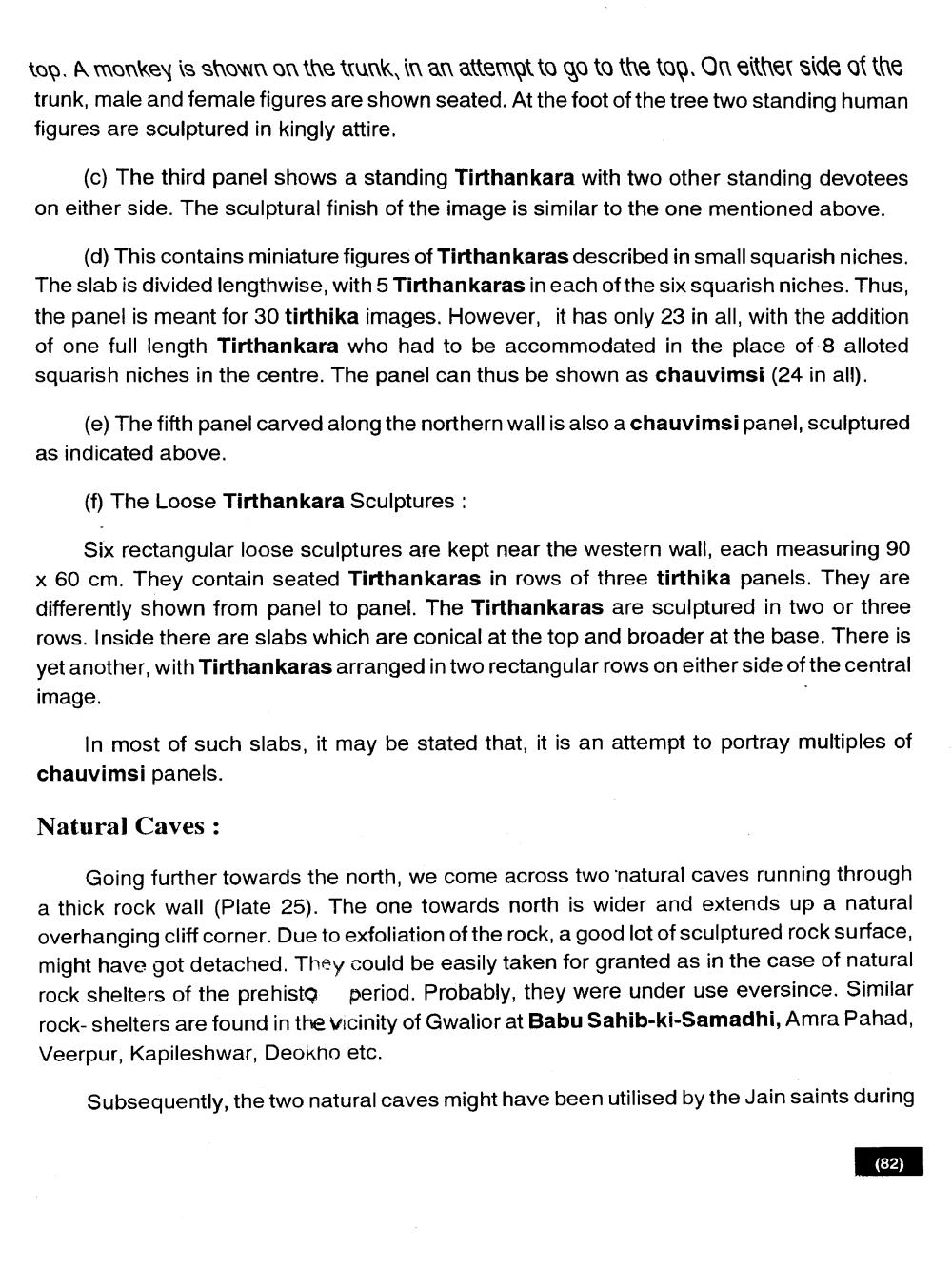________________
top. A monkey is shown on the trunk, in an attempt to go to the top. On either side of the trunk, male and female figures are shown seated. At the foot of the tree two standing human figures are sculptured in kingly attire.
(c) The third panel shows a standing Tirthankara with two other standing devotees on either side. The sculptural finish of the image is similar to the one mentioned above.
(d) This contains miniature figures of Tirthankaras described in small squarish niches. The slab is divided lengthwise, with 5 Tirthankaras in each of the six squarish niches. Thus, the panel is meant for 30 tirthika images. However, it has only 23 in all, with the addition of one full length Tirthankara who had to be accommodated in the place of 8 alloted squarish niches in the centre. The panel can thus be shown as chauvimsi (24 in all).
(e) The fifth panel carved along the northern wall is also a chauvimsi panel, sculptured as indicated above.
(f) The Loose Tirthankara Sculptures:
Six rectangular loose sculptures are kept near the western wall, each measuring 90 x 60 cm. They contain seated Tirthankaras in rows of three tirthika panels. They are differently shown from panel to panel. The Tirthankaras are sculptured in two or three rows. Inside there are slabs which are conical at the top and broader at the base. There is yet another, with Tirthankaras arranged in two rectangular rows on either side of the central image.
In most of such slabs, it may be stated that, it is an attempt to portray multiples of chauvimsi panels.
Natural Caves :
Going further towards the north, we come across two natural caves running through a thick rock wall (Plate 25). The one towards north is wider and extends up a natural overhanging cliff corner. Due to exfoliation of the rock, a good lot of sculptured rock surface, might have got detached. They could be easily taken for granted as in the case of natural rock shelters of the prehisto period. Probably, they were under use eversince. Similar rock-shelters are found in the vicinity of Gwalior at Babu Sahib-ki-Samadhi, Amra Pahad, Veerpur, Kapileshwar, Deokho etc.
Subsequently, the two natural caves might have been utilised by the Jain saints during
(82)




